November 22, 2023 at 10:36 am
Have Turkeys Been Wrongly Accused for the Uptick?
The topic of turkeys is one which has no doubt sparked great debate around many Thanksgiving tables in Maine. Some are thankful for this prized gamebird’s comeback, while others are “ticked” off about their reintroduction. The best way to address this dispute is to look to science for the answers.
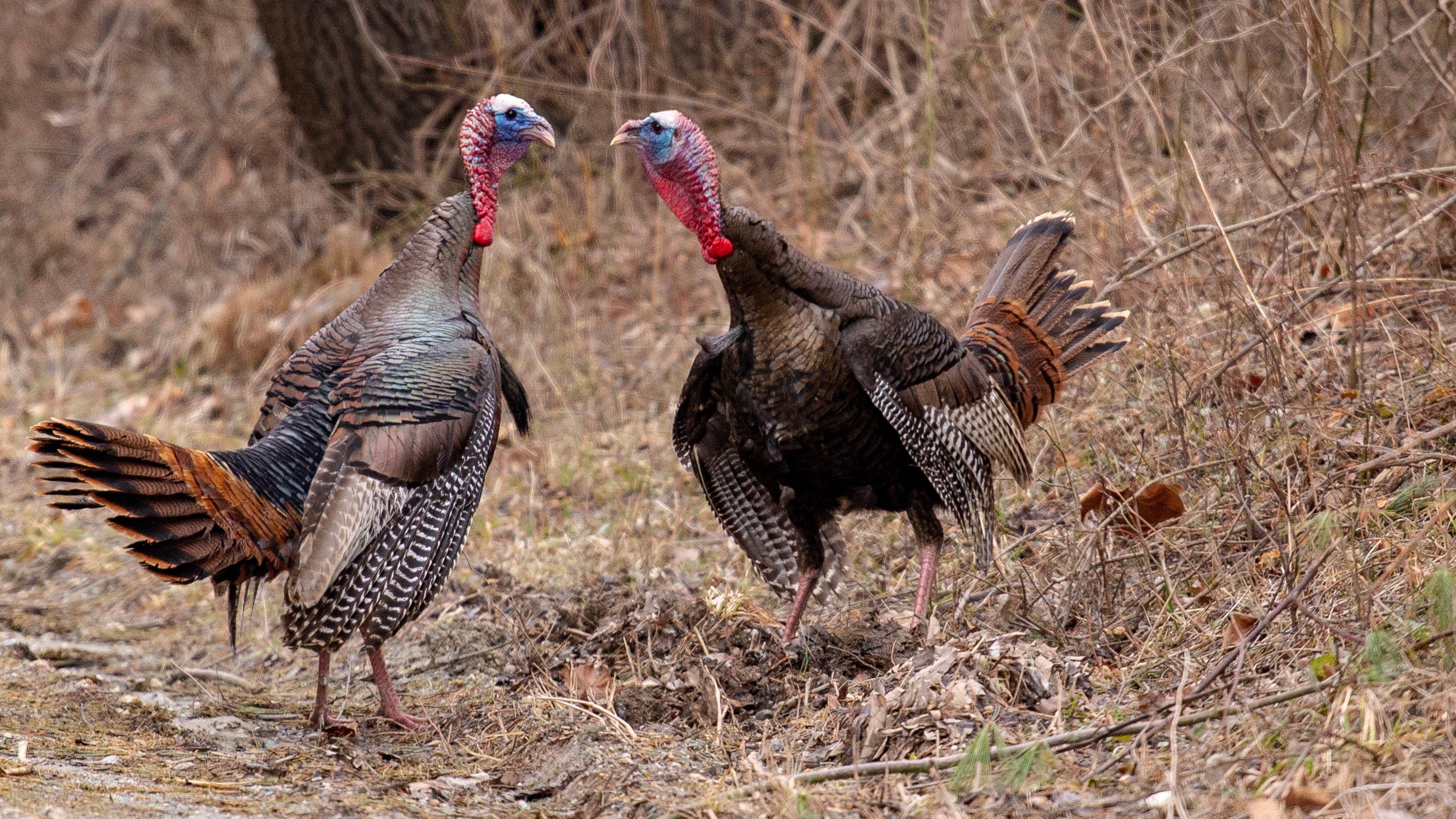
Numerous studies have shown that while turkeys will not solve our state’s tick problem, they also did not create it. The social, environmental, and economic impacts that wild turkeys have in Maine are overwhelmingly positive, solidifying them as an appropriate symbol of thankfulness as we enter the holiday season.
A Brief History Lesson
It is important to remember that the story of wild turkeys in Maine begins long before reintroduction, and that they are in fact a native species. As such, they fall squarely within MDIFW’s duty to preserve, protect, and enhance Maine’s wildlife resources.
Prior to settlement, wild turkeys existed in significant numbers, particularly in York and Cumberland Counties. But unrestricted hunting paired with a massive reduction of forest habitat as agricultural practices intensified led to the total loss of Maine’s population by the early 1800s. Attempts to bring wild turkeys back to our state began in the 1940s with pen raised wild turkeys that were unsuccessful. The first successes with reestablishment didn’t occur until the late 1970s, adopting the strategy of trapping full grown wild turkeys from other states and releasing them in Maine. It was a challenging recovery, and we are lucky to have the healthy population that exists today.
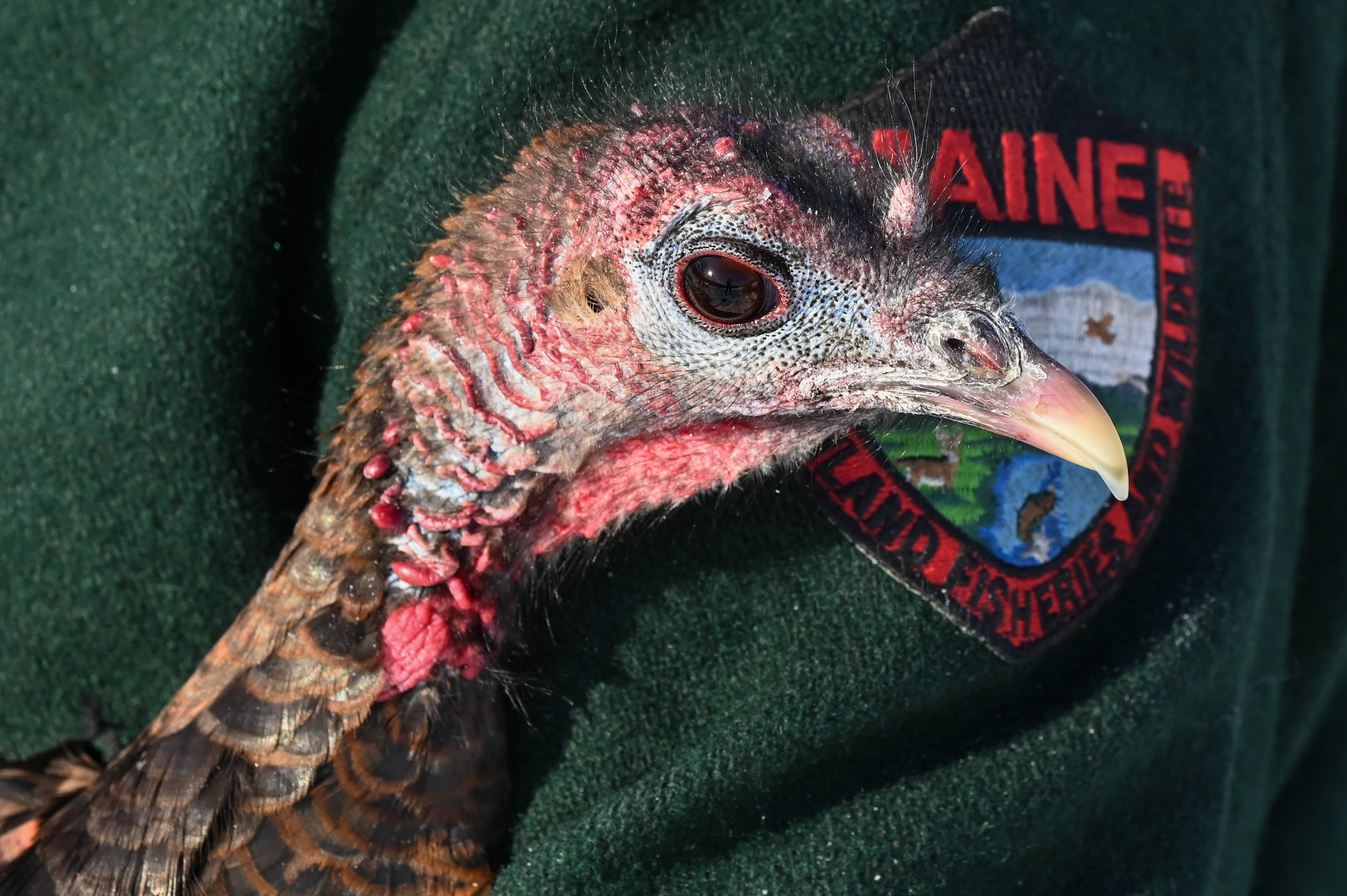
Lyme disease also has an extensive history here. A team of Yale researchers used genome sequencing to trace the origin and spread of tick-borne diseases. They discovered that the bacteria that causes Lyme disease is not a newcomer to the United States. It has been circulating in North America long before the reintroduction of turkeys. In fact, it has been around for over 60,000 years, well before humans were even in the picture. The current rise in Lyme disease was not caused by a reintroduction of the bacteria or a recent mutation of the bacteria.
Correlation vs. Causation
Black-legged ticks (commonly known as deer ticks) are the primary vector for Lyme disease (and other tick-borne diseases) and were first documented in southern Maine in the 1980s. Their population has since increased, their range has expanded, and Lyme disease is on the rise. The timing of the expansion of ticks does coincide with the reestablishment of wild turkeys, and with such suspicious timing, turkeys seem like an easy scapegoat. But, as every good scientist knows, correlation does not imply causation.
In other words, two independent events trending similarly over time does not definitively prove that one produced the other. Why? There are countless other variables in play! Changes in temperature, humidity, human population, wildlife populations, habitat and much more were also occurring at the same time, so the determination of cause and effect is complex to say the least. A good place to begin is to understand the life cycle of the tick.
Vector Life Cycle
A parasite is dependent on its host for survival. Deer ticks feed on three separate hosts throughout their life cycle. Small mammals, such as mice, are typical hosts for the first stage and mid-sized mammals are the most common hosts for the second stage. White-tailed deer are the primary host for the final adult stage, providing both a source of nutrients and a method of dispersal. So where do turkeys fit in?
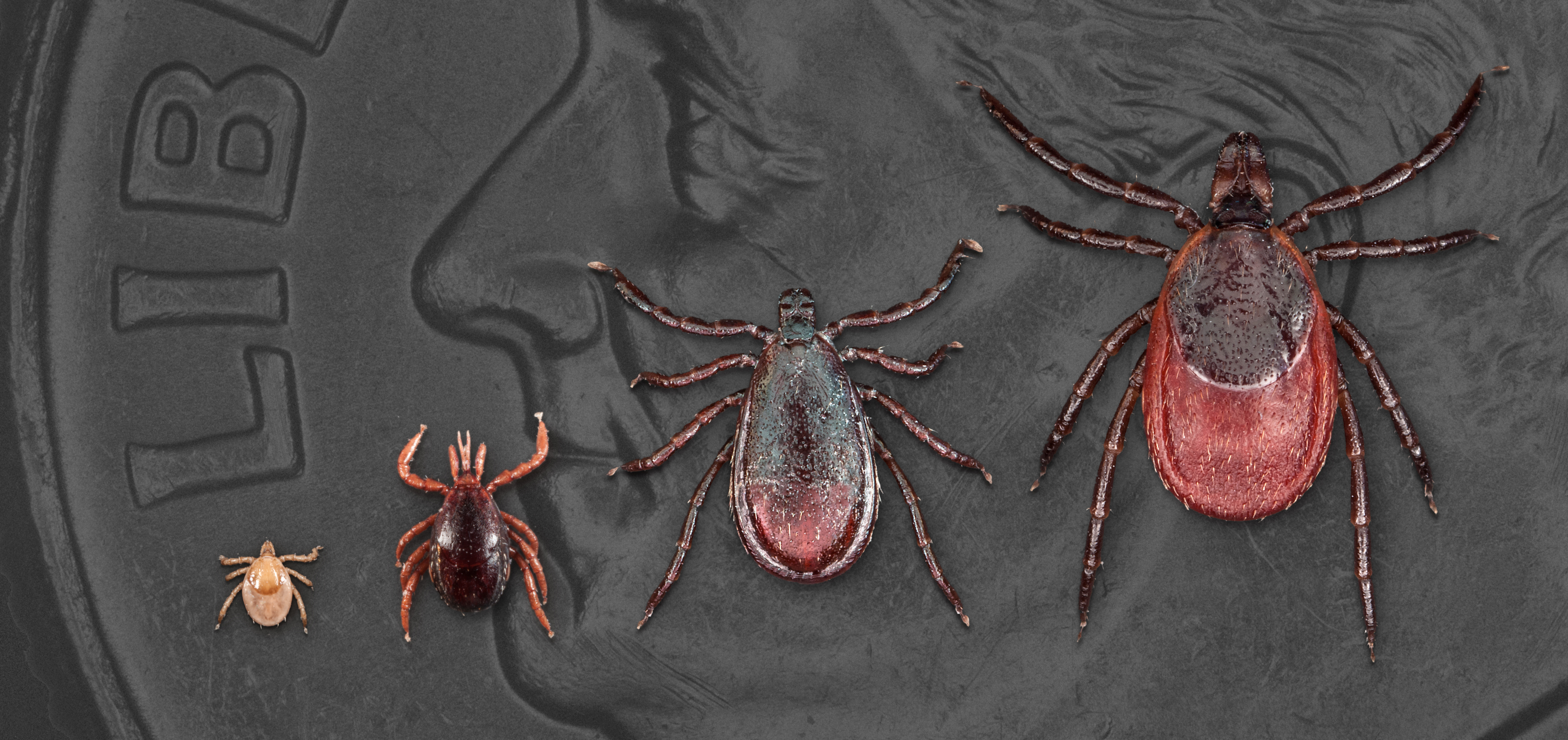
Photo by the U.S. CDC
Net Zero Host
A number of scientific studies have been conducted to investigate interactions between turkeys and ticks and determine if wild turkeys are likely beneficial hosts for deer ticks at any stage in the life cycle. The results were clear. Deer ticks rarely successfully feed on turkeys. While turkeys can and do sometimes carry ticks, it’s not at high levels, and most are quickly consumed during preening prior to becoming engorged, limiting spread. So, could turkey preening and foraging actually decrease tick densities? Unfortunately, no. Study results show that turkeys are relatively ineffective predators of ticks. Overall, wild turkeys carry a few ticks and eat a few ticks, and have a net zero impact.
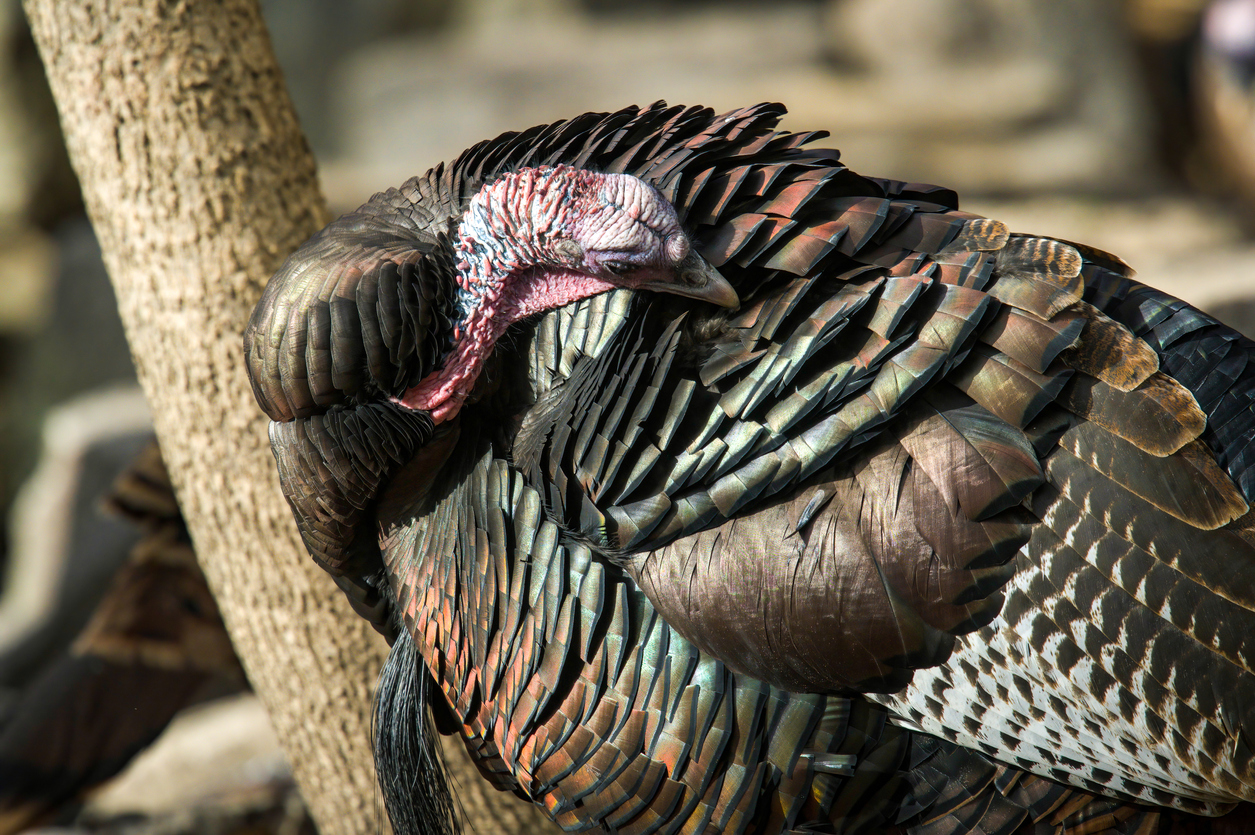
The Bigger Picture
In addition to hosts, ticks also require suitable habitat and favorable environmental conditions such as humidity and temperature. Milder seasons have contributed to the spread of deer ticks in Maine. Warmer temperatures support higher survival by giving ticks more time to find hosts and by allowing more ticks to lay eggs and more eggs to survive to hatch.
Scientists continue to research how variables such as changes in tick habitat, host habitat, host density, host health, and climate relate to each other and to the proliferation of ticks in our state.
“If we just have a better understanding of all the factors taken together, I think we could do a better job of helping people control deer ticks and prevent disease.” -Susan Elias, PhD
Winter Ticks and Moose
In addition to taking the heat for an increase in deer ticks and Lyme disease in southern Maine, turkeys are also often wrongly blamed for the impact of winter tick on moose in northern Maine. Winter tick has been documented in Maine since the 1930s, well before turkey reintroduction. Unlike deer ticks, winter ticks use a single host, usually a moose, for their whole life cycle. The turkey population is quite small in the core moose range, so even if turkeys were to carry a significant number of winter ticks, there is limited opportunity to cause any large-scale effect on the landscape. Mild winters combined with high moose population densities are the key elements in proliferation of winter tick and reproductive rates of moose.
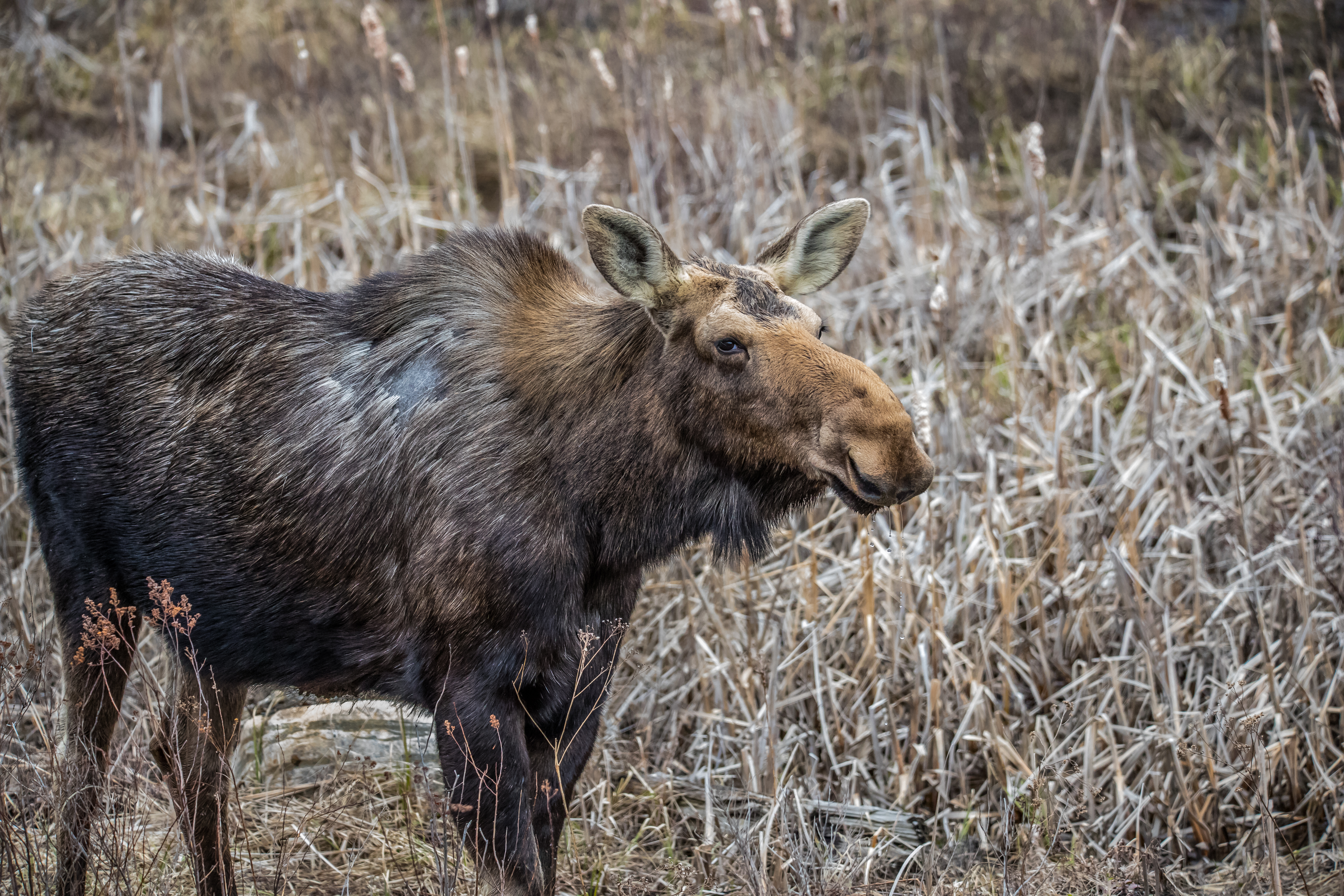
Giving Thanks
There is still a lot of work to be done to tackle ticks and tick-borne diseases in Maine, but there’s no better time of year to let our native wild turkeys off the hook and focus on the positives that go far beyond economic value. Turkeys provide wildlife enthusiasts with easy and safe viewing opportunities and provide an excellent way for hunters to pass skills and knowledge to the next generation. They provide seed dispersal, help keep insects under control, and enhance biodiversity by providing meals for several other native Maine species.
We hope that instead of the great tick debate next Thanksgiving, you’ll take a moment to give thanks and appreciate the recovery of wild turkeys and the many benefits they provide in Maine.
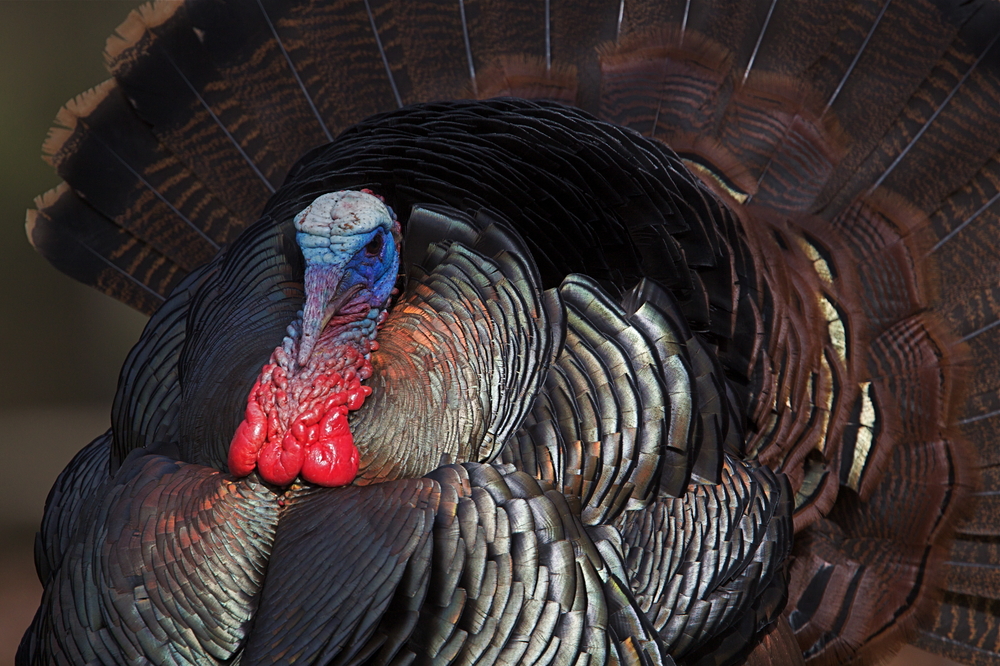
More Information:
Sources:
Ostfeld, R.S., Lewis, D.N. (21 June 1999) Experimental Studies of Interactions Between Wild Turkeys and Black-Legged Ticks. Institute of Ecosystem Studies. Journal of Vector Ecology 24(2): 182-186.
Reitman, E. (28 Aug 2017) Ancient History of Lyme Disease in North America Revealed with Bacterial Genomes. Yale School of Medicine.